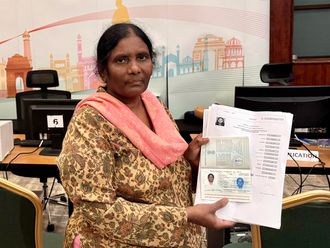Abu Dhabi: Regenerative medicine is a new approach that can help regenerate damaged body parts, replace cancer-ridden organs with healthy ones to save the lives of many patients who are waiting for donors, said Anthony Atala, a well-renowned doctor based in Florida.
In his lecture delivered at the Majlis of General Shaikh Mohammad Bin Zayed Al Nahyan, Abu Dhabi Crown Prince and Deputy Supreme Commander of the UAE Armed Forces, on Monday, Atala said that regenerative medicine offers the potential to improve the quality of life for many, but also to combat rising health care costs.
Early estimates project that regenerative medicine therapies will result in direct health care cost savings
He pointed out that regenerative medicine therapies are already helping small groups of patients through clinical trials.
In fact, scenarios like these aren't outside the realm of possibility and scientists around the world are working both to expand the applications of these therapies and to bring them into more widespread use, he added.
New frontier
He confirmed that the effort to harness the body's natural healing powers has been called a new frontier in medicine because it offers the promise to actually cure, rather than just treat, disease.
Atala stated that regenerative medicine has several elements starting from injection of cells, healing, replacement of tissues and organs which are engineered in the labs and the use of bio-compatible materials or small molecules to prompt tissue regeneration from within the body.
"These therapies are designed to take advantage of the body's healing abilities. For example, skin and bone tissues are constantly regenerating. The skin changes every week and bones are replaced every ten years. If a part of the spleen is removed after being injured, it will re-grow," continued Atala.
He explained that the most challenging part is to determine how to culture the cells and stimulate them to grow, citing an example of ear and bladder culture.
Organ growth
"The most important part in the transplantation is provision of blood supply that would allow the cell to thrive and make the organ grow into the mold since the mold is biodegradable," added Atala, stating that specialist can now take a piece of tissue the size of a square centimetre, and under the magnification of a tissue culture microscope, place them in culture mediums that can spawn enough cells to encompass an entire football field in eight weeks.












